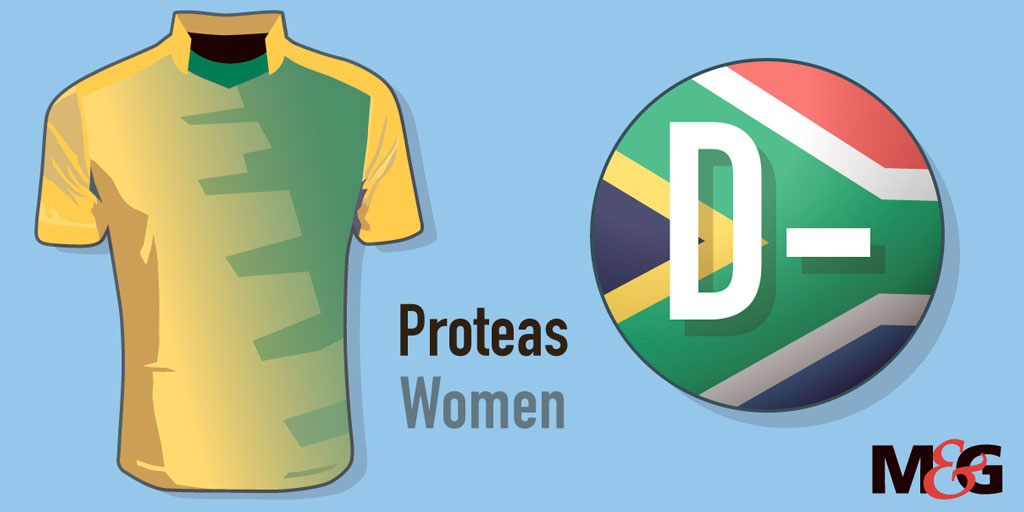South Africas batsman Aiden Markram came of age this year with his two hundreds. (Marco Longari/AFP)
Sport is in South Africa’s DNA. In the past 24 years, it has been the tugboat that has towed our image past a global audience. From promising the world a new beginning in 1995 to luring 2.2-billion eyeballs during the World Cup in 2010, the field has been the scene for some of our greatest moments. If our national teams are adverts of who we are then it’s little wonder we are so quick to hold them to account. So let’s do just that. Luke Feltham breaks down how our three major codes responded to the pressure and did their duty in 2018.
Proteas on a good wicket
Bar the Sri Lanka Test series, the team brought back a sense of indomitability to their game

The Proteas brought back a sense of indomitability to their game in 2018. Bar that infamous Test series in Sri Lanka, there was never a sense that this was a side swimming in depths that they did not belong in. Before that, though, there were enormous results.
“Obviously, the test matches at the top of the year were unbelievable in terms of quality, intensity and drama,” says Lungani Zama, sports writer at Independent Newspapers and close follower of the national side. “Even if we then went to Sri Lanka and lost that series badly, I think to beat Australia and India back to back — on pitches that were quite sporting and put both sets of attacks into the game quite a lot more — was a wonderful advert for Test cricket, first of all, but also because the big players stood up. And not just AB de Villiers and stalwarts but a guy like Aiden Markram came of age with two gutsy hundreds.”
The former of those series, of course, captured headlines across the country and had the public gripped by Test action at a level rarely seen before.
Australia’s heinous ball-tampering offence and descent into disgrace obviously stood front and centre. Images of Cameron Bancroft with “sticky near my dicky”, to quote a tabloid Down Under, may just be the most memorable sporting moment of the entire year.
With captain-at-the-time Steve Smith, David Warner and Bancroft all out, the final game in Johannesburg was always going to be a less competitive affair. Indeed, as injury scares hung over almost all bowlers, Faf du Plessis prolonged Aussie misery and didn’t declare in the second innings until a target of 612 was set. The carnival atmosphere at the Wanderers was contagious and a unique joy for a South
African fan in such a prestigious Test match. Still, the win stood as the first at home over Australia since 1970 and reason for big celebration.
The cunning way in which the Proteas navigated the controversy of that month was lost when they travelled to Sri Lanka in July. “Outspinned” was the term that was bandied about as the selectors failed to adapt to the conditions and were royally outplayed. Defeats by 278- and 199-runs approached the embarrassing.
From a one-day international (ODI) perspective, the high of beating India in the January Tests left South Africa supple and the same team duly wiped the floor with them.
It was evidently a learning experience and, along with De Villiers’ semi-surprise retirement, was successfully absorbed.
“You could see in the trips to Australia and even Sri Lanka that the lessons were absorbed,” Zama says about the ODI performances. “There were a few things ironed out even in the absence of AB. There is a bit more clarity in terms of roles. Even though the top order may not be completely settled, there are people who are putting their hands up and are starting to be comfortable with being an important member of the top four and are ready to make big runs in order for South Africa to win the World Cup.”
The Proteas have proven abundantly this year that they have the ability to respond to defeat and build on success. That alone is worthy of a high score.
Highlight: The historic Test series win over Australia
Lowlight: Fulfilling the role of Sri Lanka’s mop
Women’s Proteas wilt under heat
It’s not been an easy year for the Women’s Proteas. The grind was there, but, bereft of quality, it was not enough to force the results to flow.

Ahead of the Women’s World T20 in Saint Lucia last month, coach Hilton Moreeng was adamant that preparations had been adequate. “We are where we need to be,” he said in the face of the torrential rains that had denied the team pre-tournament practice sessions.
He and others will look back on 2018 as a period that has left them with a great need for deep and varied introspection.
Of greatest concern was their proclivity to roll over and their inability to threaten more established rivals. This was evident in February, when hosts India comfortably sewed up the first ODI series of the year with cozy 88- and 178-run wins.
The subsequent T20 games brought no relief; South Africa won only one of the four played to completion. Lowly Bangladesh stepped in to fulfill their roles of punching bags and allowed the Proteas to take out their frustrations with clean-sweep victories across the two formats.
That was about as good as it would get.
A trip to England brought another ODI series loss. The visitors put in a superb opening game to secure victory, but were unable to build on it and flopped in the following two.
A subsequent short-eformat Tri-Nations Series against England and New Zealand was barely a landing cushion because, once again, the Proteas were played off their crease.
With the Women’s World T20 fast approaching, September’s excursion to the Caribbean suddenly took on huge importance as the final opportunity to improve and prepare for the showpiece.
Not making it easy were key absentees; wicketkeeper batswoman Trisha Chetty was out because of a back injury and fast bowler Shabnim Ismail missed the flight as a result of family responsibilities. Considering the losses, the team did admirably, ultimately drawing both the ODI and T20 series.
The problem was they were unable to repeat the feat at the World Cup. Losing to No 2 ranked England yet again was expected, but the team needed a result against the Windies to maintain a chance of navigating a way out the group. Wins against Sri Lanka and Bangladesh were not good enough and, disappointingly, that was that.
More than anything, the tournament served to highlight what has become a disconnect in talent between the bowling and batting line-ups.
Ismail described her and Marizanne Kapp as the best openers in the world after they, and Dane van Niekerk, dismantled the Sri Lankan wicket in the opening game. When the results didn’t go their way, the praise died down and the finger-pointing began.
“Very disappointed,” said captain Van Niekerk after the order failed to chase down a West Indies score of 107 and were chucked out for 76.
And what can we say with a batting display like that? “I can’t fault the bowlers and the batters aren’t doing any justice to the bowlers. We spoke about the full face of the bat, but we’re not doing it at the moment. Credit to them, they deserved the win,” she said.
Given the obvious talent with the ball, it’s hard to argue — four South Africans occupy the top 11 spots in the ODI rankings. Can the rest of the side catch up in 2019 to improve this rating?
Highlight: Consistent excellent bowling displays.
Lowlight: A limp exit from the T20 World Cup.